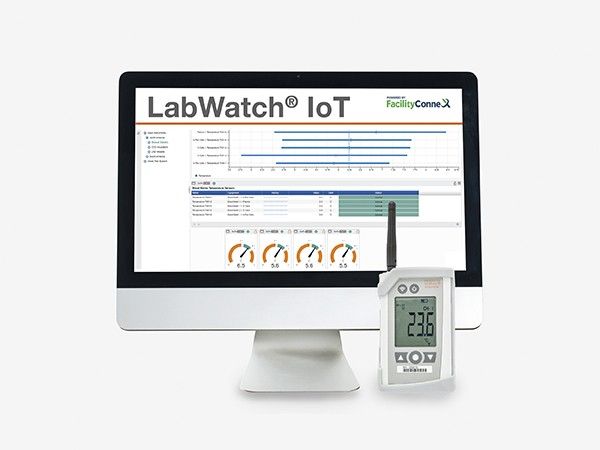
In the rapidly evolving landscape of smart technology, operational efficiency is no longer just a competitive advantage—it’s a necessity. Companies across industries are investing in cutting-edge tools to streamline processes, improve safety, and reduce costs. At the core of this transformation are Facility Monitoring System and IoT Monitoring System, two interconnected technologies revolutionizing how we manage buildings, equipment, and environmental conditions.
In this article, we’ll explore what these systems are, their key benefits, use cases, and how they are shaping the future of industrial and commercial facility management.
What is a Facility Monitoring System?
A Facility Monitoring System (FMS) is a comprehensive solution designed to oversee and manage a building’s critical infrastructure. It collects real-time data from various sensors and devices, offering insights into temperature, humidity, energy consumption, air quality, equipment status, and security parameters.
FMS helps facility managers maintain ideal operating conditions, ensure regulatory compliance, and respond proactively to issues before they escalate. Whether it’s a hospital, laboratory, data center, or manufacturing plant, this system provides complete visibility and control over operations.
What is an IoT Monitoring System?
An IoT Monitoring System extends the capabilities of traditional facility monitoring by connecting equipment, sensors, and devices through the Internet of Things (IoT). Unlike isolated monitoring tools, an IoT system enables remote access, real-time alerts, and intelligent automation.
It leverages a network of smart sensors and cloud-based platforms to deliver actionable insights. This data-driven approach helps in predictive maintenance, energy optimization, and operational agility.
Facility Monitoring vs. IoT Monitoring: What’s the Difference?
While both systems share similar objectives—improving efficiency and visibility—the key difference lies in connectivity and intelligence:
| Feature | Facility Monitoring System | IoT Monitoring System |
|---|---|---|
| Connectivity | Local networks | Internet-connected (cloud/edge) |
| Accessibility | On-site | Remote and real-time |
| Intelligence | Rule-based alerts | AI and data analytics driven |
| Integration Scope | Limited systems | Broad, multi-device ecosystems |
| Scalability | Moderate | Highly scalable and modular |
Key Benefits of a Facility Monitoring System
✅ 1. Real-Time Data Monitoring
FMS provides instant feedback on critical environmental factors, such as temperature fluctuations in cold storage, power usage, and humidity levels in cleanrooms.
✅ 2. Regulatory Compliance
Industries like pharmaceuticals, food processing, and biotech require strict adherence to standards (e.g., FDA, ISO, GxP). Facility monitoring ensures documentation and traceability for audits.
✅ 3. Equipment Uptime
By monitoring key performance indicators (KPIs) of machinery, facility managers can detect wear-and-tear early, minimizing downtime and expensive repairs.
✅ 4. Energy Efficiency
Energy consumption can be tracked and optimized by identifying waste and inefficiencies in HVAC, lighting, and other systems.
✅ 5. Centralized Management
All monitored parameters are available through a unified dashboard, helping teams manage operations more efficiently from a single point of control.
How IoT Monitoring Systems Enhance Facility Monitoring
The integration of an IoT Monitoring System takes traditional FMS to the next level. Here’s how:
🌐 1. Remote Access and Control
Facility managers no longer need to be on-site. Through mobile apps and web dashboards, they can view data, receive alerts, and adjust settings from anywhere.
🔔 2. Predictive Maintenance
IoT devices use machine learning algorithms to predict when equipment will fail. This helps schedule maintenance before issues occur—saving time and reducing costs.
📊 3. Historical Data and Analytics
The system stores vast amounts of data in the cloud, allowing long-term trend analysis, anomaly detection, and smarter decision-making.
🔄 4. Real-Time Alerts and Automation
Automated workflows can trigger actions based on specific events. For example, if the temperature in a server room rises above a threshold, an alert is sent, and the cooling system activates automatically.
🧩 5. Interconnectivity with Other Systems
IoT monitoring integrates easily with Building Management Systems (BMS), ERP software, and energy dashboards to provide a holistic view of facility performance.
Real-World Applications
🏥 Healthcare
Hospitals and laboratories use facility monitoring systems to ensure temperature-sensitive medications and samples are stored correctly. An IoT monitoring system can track equipment usage and alert staff of abnormalities before they affect patient care.
🏭 Manufacturing
Production facilities rely on both systems to monitor machinery health, prevent bottlenecks, and maintain environmental control for sensitive processes.
📦 Warehousing and Cold Storage
Temperature and humidity monitoring are critical in food and pharmaceutical warehouses. These systems ensure compliance and reduce spoilage risks.
🏢 Commercial Buildings
Smart office buildings use IoT monitoring for energy efficiency, space utilization, lighting automation, and air quality control—creating a comfortable and sustainable work environment.
💻 Data Centers
Data centers require 24/7 monitoring of temperature, humidity, and power supply. IoT systems help ensure uptime and protect valuable IT infrastructure.
Implementation Steps
Introducing a Facility and IoT Monitoring System involves several key steps:
1. Assessment
Understand the specific monitoring needs—what parameters need tracking, what assets are critical, and what regulations apply.
2. Sensor Deployment
Install appropriate sensors and data loggers for temperature, humidity, pressure, motion, air quality, etc.
3. Platform Selection
Choose a scalable platform that integrates FMS with IoT capabilities. Look for mobile access, real-time alerting, and historical reporting features.
4. Integration
Connect the system with your existing infrastructure (e.g., HVAC, lighting, alarm systems, ERP).
5. Training and Testing
Ensure staff are trained to interpret data, respond to alerts, and leverage system features effectively. Test scenarios to validate functionality.
Future Trends in Facility and IoT Monitoring
As technologies evolve, we can expect:
-
AI-Driven Decision Making: AI algorithms will enhance data interpretation and suggest corrective actions.
-
Edge Computing: Data processing at the source reduces latency and increases system responsiveness.
-
Digital Twins: Virtual replicas of physical facilities enable simulations and predictive modeling.
-
Enhanced Cybersecurity: With increasing interconnectivity, securing data and networks becomes vital.
Conclusion
The convergence of Facility Monitoring Systems and IoT Monitoring Systems is transforming how organizations manage operations, ensure compliance, and achieve sustainability. From manufacturing to healthcare, the ability to monitor, analyze, and optimize facilities in real-time is no longer futuristic—it’s foundational.
As businesses aim to stay resilient and future-ready, investing in these smart monitoring solutions is not just a trend—it’s a strategic imperative.





